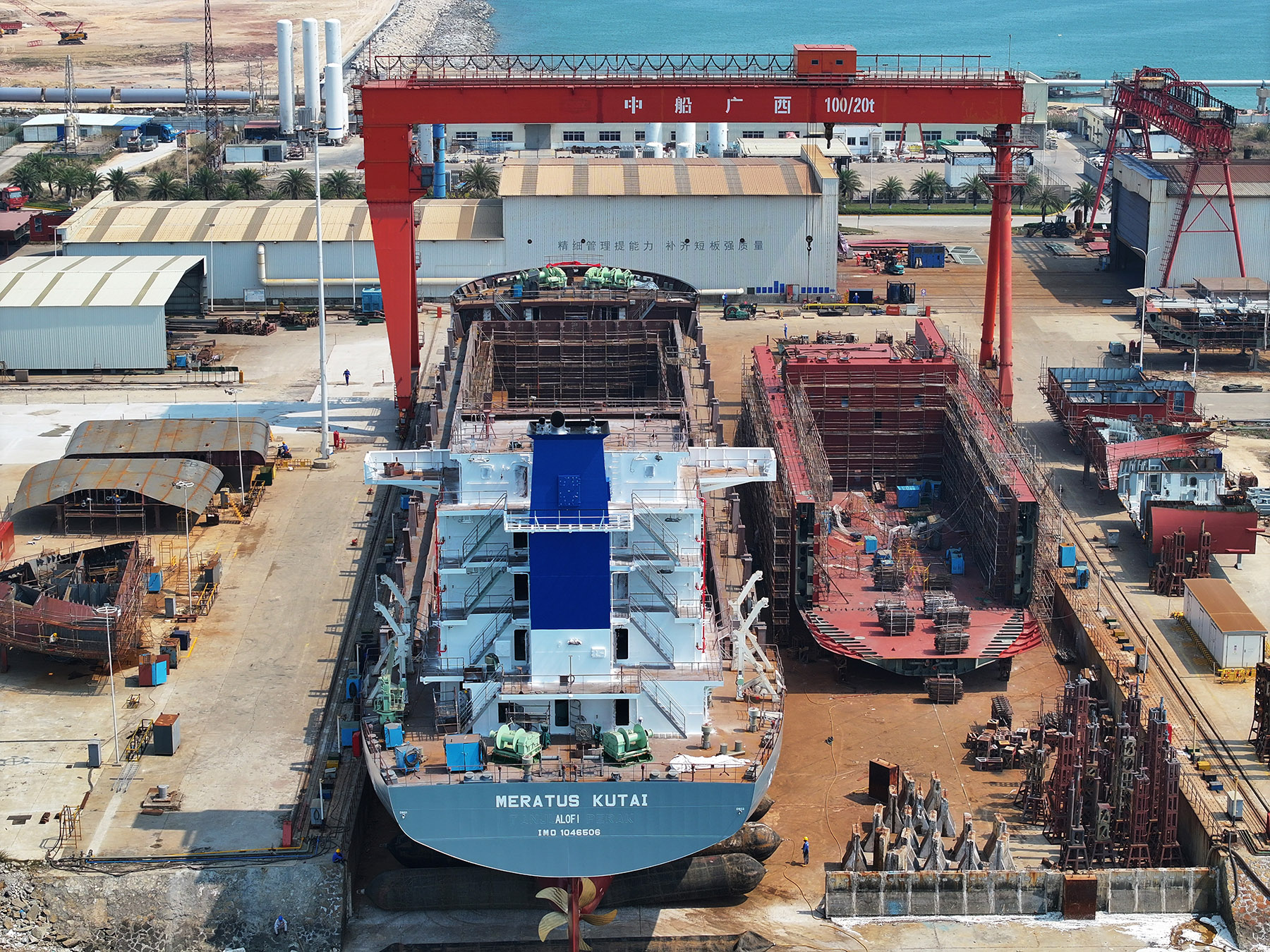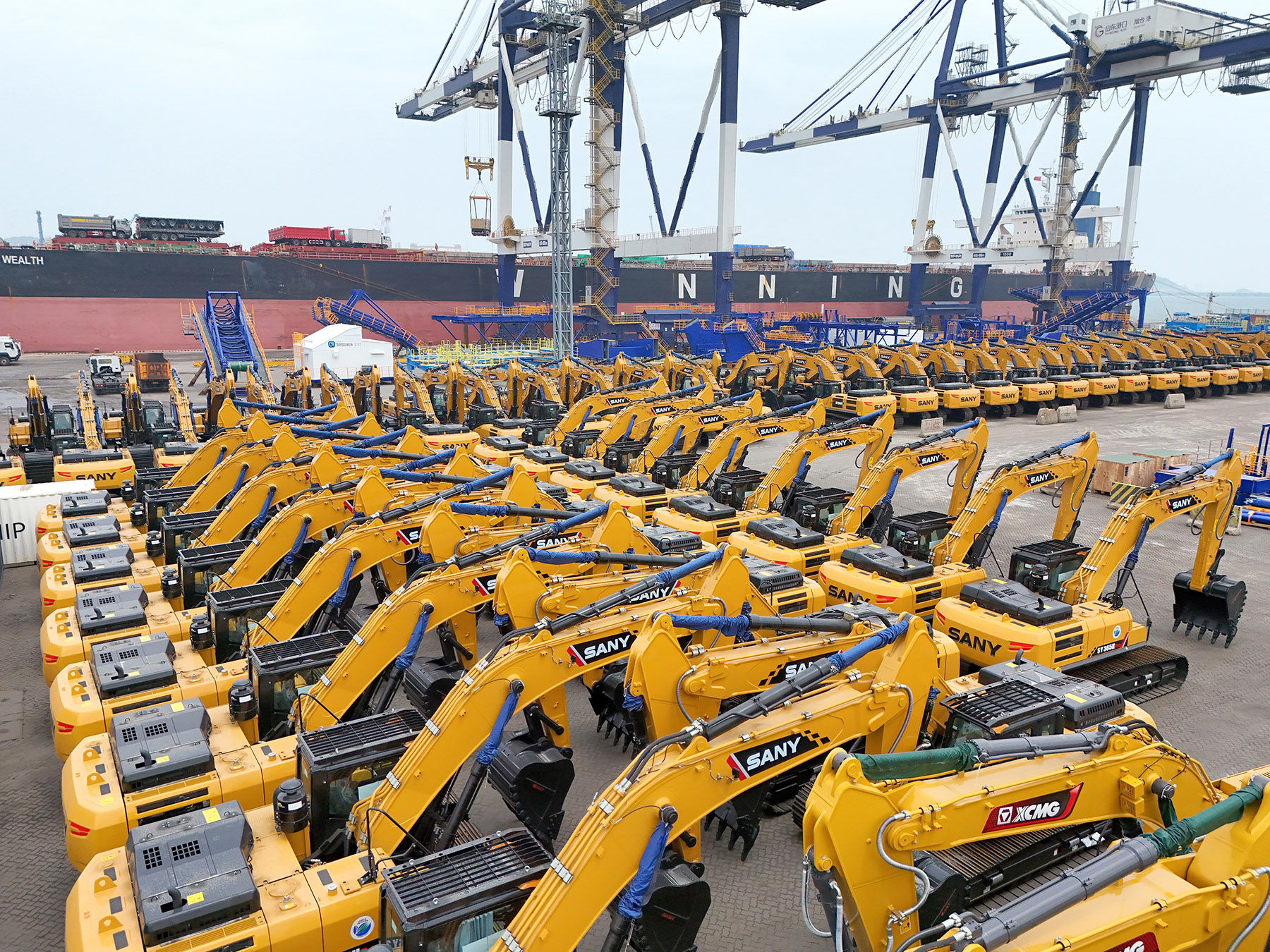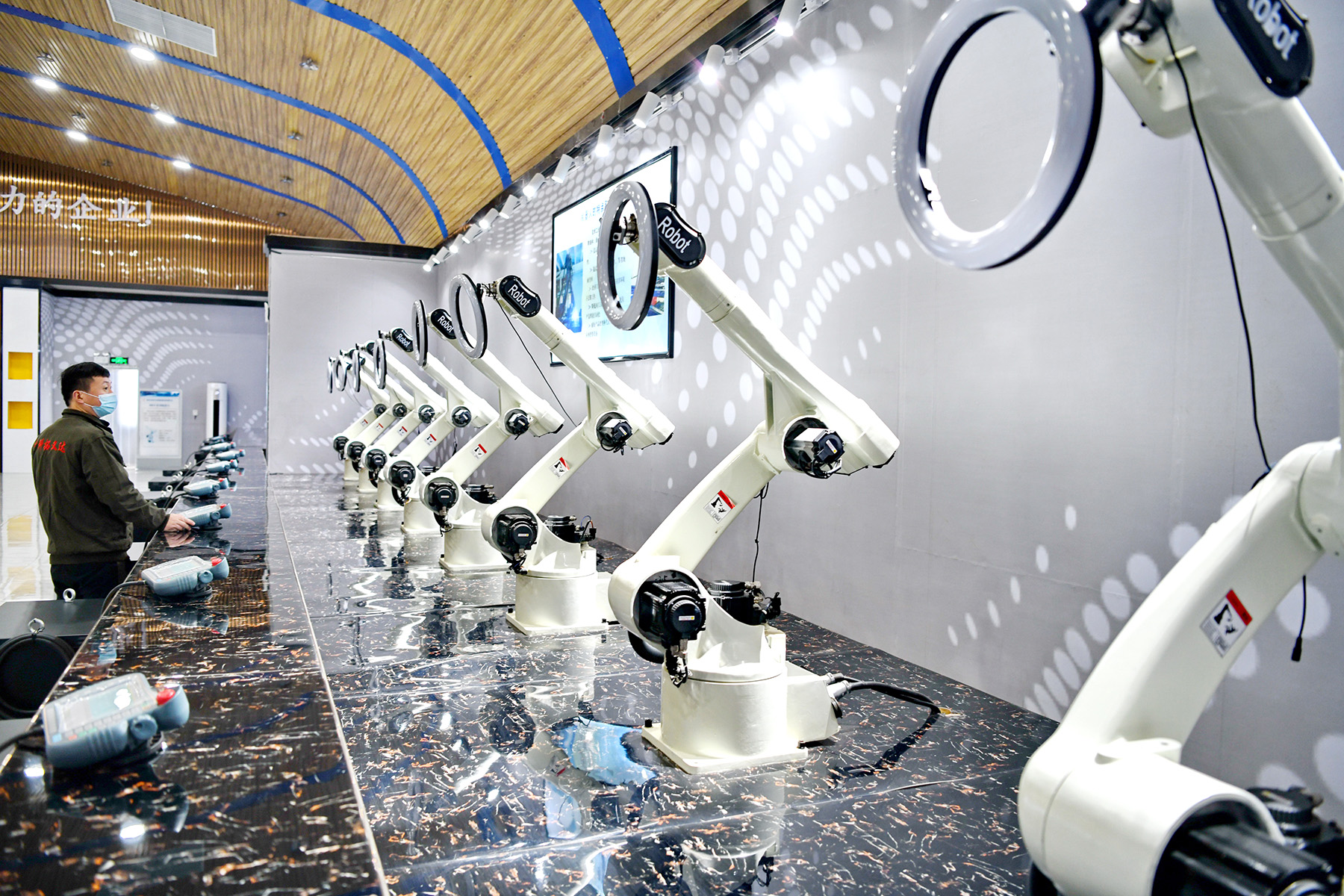Domestic producers adopting innovation, green development to deliver energy-efficient, high-tech and competitively priced products to country's trading partners

In early July, a shipyard along the Yangtze River in Jiangyin, East China's Jiangsu province, was humming with the sounds of welding and hammering.
In one berth, work on an oil tanker was nearing completion, while a hospital ship was undergoing a major retrofit. A little distance away, dry docks were operating at full throttle.
CSSC Chengxi Shipyard Co, a subsidiary of China State Shipbuilding Corp, saw its export value surge by more than 28 percent year-on-year in the first five months. With orders lined up through 2028 and a growing appetite for high-tech vessels, this shipyard is powering full steam ahead.
"We are steering toward transformation," said Yang Haibo, the shipyard's assistant president. "Take the 41,800-ton self-unloading vessel we built last year; its value hit $96 million, triple that of a conventional bulk carrier. We just secured an overseas order to build a 44,000-ton self-discharger in May."
READ MORE: China's industrial profits dip with growth drivers supporting outlook
As global demand shifts, Yang said Chinese shipyards are embracing greener and smarter solutions to remain competitive, including ramping up investment in next-generation shipbuilding technologies.
Much like China's new energy vehicle, industrial robot and energy storage sectors, the shipbuilding industry exemplifies how domestic manufacturers are adopting innovation and green development to rise above the challenges posed by unilateralism and geoeconomic fragmentation.
In the process, they are playing a vital role in supporting the country's foreign trade and industrial upgrade.
As a high value-added sector, the equipment manufacturing industry has become a key driver of China's export restructuring.
The country's exports of equipment manufacturing products amounted to 6.22 trillion yuan ($853.3 billion) between January and May, up 9.2 percent year-on-year, accounting for 58.3 percent of the country's total exports, data from the General Administration of Customs showed.

Meanwhile, China's exports of electric vehicles grew by 19 percent year-on-year, construction machinery by 10.7 percent, ships by 18.9 percent and industrial robots by an impressive 55.4 percent.
Equipment manufacturing accounted for 73 percent of China's export growth in the first five months, with the contribution rising to 76.9 percent in May alone, providing strong support for the steady growth of foreign trade, said Lyu Daliang, director-general of the administration's department of statistics and analysis.
The ongoing upgrade of China's equipment manufacturing industry is not only fueling the growth of domestic manufacturers, but also delivering energy-efficient, high-tech and competitively priced products to its trading partners, said Chen Jianwei, a researcher at the University of International Business and Economics' Academy of China Open Economy Studies in Beijing.
This progress is accelerating the digital and green advancement of developed economies, while also supporting industrialization and urbanization in many developing and emerging markets, contributing to more balanced global development and long-term sustainability, said Chen.
Among the key drivers of this momentum, industrial robots have rapidly become a standout export category. These multijoint robotic arms and other advanced robotic systems are widely used in sectors such as automotives, electronics, chemicals and consumer goods.
As China's production capabilities in this field continue to advance, a growing number of industrial robots are being exported to markets such as Thailand, Germany, the United States and the United Arab Emirates — underscoring the global appeal of the nation's smart manufacturing solutions.
At AgileX Robotics, a robotic arm manufacturer in Dongguan, Guangdong province, workers were busy packing robotic arms in late June. This batch of products, designed for data collection, plays a key role in the development and training of humanoid robots, and has gained strong traction in overseas markets.
"We really can't ship fast enough and demand is overwhelming. Our exports this year are expected to rise by 70 to 80 percent compared with 2024," said Chen Peng, the company's marketing director.
Chen said that orders from overseas research institutions, particularly in the artificial intelligence field, are growing the fastest. These clients often require rapid delivery due to time-sensitive needs.
This growth is not merely the success of a single robot manufacturer. Rather, it reflects a broader trend in Dongguan.
The city's exports of industrial robots, including industrial robotic arms, handling and welding robots, and robots with other functions, exceeded 190 million yuan during the January-May period, representing a year-on-year increase of 116.4 percent, data from Huangpu Customs showed.

From an industrial chain perspective, China's industrial robot sector has seen significant advancements over the past decade, especially in core components such as reducers, servo motors, controllers and control units, said Lei Lei, deputy secretary-general of the robotics branch of the Beijing-based China Machinery Industry Federation.
Lei said Chinese industrial robot manufacturers are evolving their export models as they expand globally. This shift is already playing out among many companies in the sector.
Xu Hongchun, vice-president of Suzhou JiBOT Technology Co, a Suzhou, Jiangsu province-based manufacturer of collaborative robotic arms and mobile robot platforms, said the company has already shifted toward providing customized end-to-end solutions for overseas factories and warehouses.
"Our material handling robots are primarily used in the new energy and electronic semiconductor sectors," said Xu. "Currently, more than 70 percent of our exports in this category include solution-based packages."
The Chinese company achieves this by integrating data from various robots into a centralized control system. A smart dispatching platform enables real-time coordination, allowing multiple robots to operate efficiently across different zones and meet the specific needs of its foreign clients.
While industrial robots and intelligent automation are shifting manufacturing and logistics, traditional heavy industries are also embracing innovation and seizing more market opportunities across the world.
In sectors such as mining and construction, Chinese companies are combining durable engineering with localization strategies to meet the needs of emerging markets.
Sany Heavy Equipment Co, a mining and construction machinery manufacturer based in Shenyang, Liaoning province, has been actively expanding its presence in the African market. Its wide-body dump trucks, electric-powered dumpers and engineering excavators are widely used in countries including South Africa, Ghana, Angola and Zambia.
"Africa is rich in mineral resources and has significant demand for mining machinery. Our mining equipment is built to withstand harsh operating conditions and is well-suited for the complex terrains found in mining areas," said Sun Bo, head of the company's sales unit.
Sun said that Sany Heavy Equipment Co's mining dump trucks have significantly improved operational efficiency and earned high praise from clients in countries such as Eritrea and Mozambique in recent years.
The company's exports amounted to 1.44 billion yuan in the first half, while its exports to Africa surged 230 percent year-on-year to 330 million yuan, the latest data from Shenyang Customs showed.
Experts said the continued rise of China's equipment manufacturing exports reflects both industrial progress and the country's deeper integration into global supply chains.
Zhao Ping, head of the academy of the Beijing-based China Council for the Promotion of International Trade, said that China is no longer just a source of affordable goods. It is increasingly a provider of complex, high-value equipment that meets the needs of developed and emerging markets alike.
ALSO READ: Seismic shift in nation's industrial revolution
Zhao said that the combination of strong research and development capabilities, digitalized manufacturing processes and mature supply chains has enabled Chinese manufacturers to evolve from volume-driven to value-driven exports.
"This transformation not only enhances China's competitiveness, but also contributes to global industrial development and technological diffusion," said Ji Xuehong, a professor at the School of Economics and Management at Beijing-based North China University of Technology.
In the face of a complex and volatile external environment, China will steadfastly expand its high-standard opening-up and address the uncertainty of drastic changes in the external environment with the certainty of its own high-quality development, said Xiao Lu, deputy director-general of the department of foreign trade at the Ministry of Commerce.
Contact the writer at zhongnan@chinadaily.com.cn


